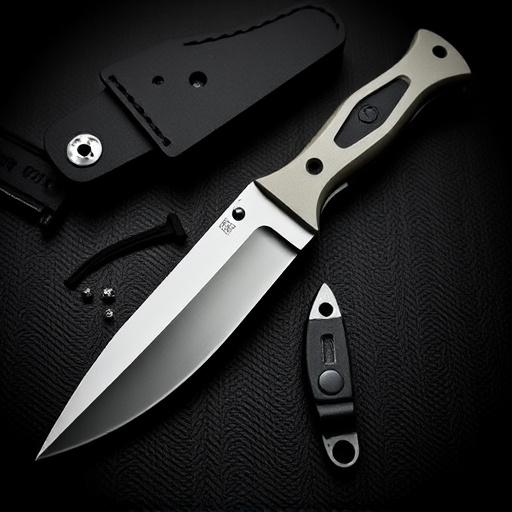Fixed blade self-defense knives, characterized by robust construction, high-quality steel, and ergonomic handles, offer advantages in close-quarters combat. For everyday carry (EDC), consider compact, lightweight designs with comfortable grips. Longer blades (4-7 inches) enhance reach for self-defense, while materials like CPM-S35VN or Damascus ensure excellent edge retention. Balanced design facilitates smooth movements, and a secure sheath ensures quick access. Responsible carrying requires skill and training, focusing on comfort, versatility, and safety through proper holsters, muscle memory formation, and controlled strikes.
“Unleash the power of a fixed blade self-defense knife—a versatile tool with distinct advantages in close-quarters combat. This comprehensive guide explores the art of carrying and utilizing these robust knives for personal safety. From understanding their unique design and benefits to selecting the perfect fit for your needs, we delve into effective techniques for safe carry and deployment. Discover how a fixed blade knife can enhance your self-defense strategy, ensuring you’re prepared in any situation.”
Understanding Fixed Blade Self-Defense Knives: Their Unique Features and Benefits
Fixed blade self-defense knives are renowned for their unique features and benefits, setting them apart from folding knives. Their solid construction and single blade design offer several advantages in close-quarters combat situations. These knives are typically crafted with high-quality steel, ensuring exceptional durability and edge retention, critical factors for effective self-defense.
The absence of a fold makes them exceptionally easy to handle and control during intense situations. Users can rely on the fixed blade’s steady and reliable performance, allowing them to focus on disarming threats or neutralizing attackers. Moreover, these knives often feature ergonomic handles designed to provide a secure grip, enhancing their effectiveness in stressful self-defense scenarios.
Choosing the Right Fixed Blade Knife for Your Carry Needs
When selecting a fixed blade knife for carry, consider your specific needs and intended use. For everyday carry (EDC), lighter, compact designs are ideal—look for knives with ergonomic handles that fit comfortably in your hand. A smaller blade length, around 2-3 inches, is practical for tasks like opening packages or cutting fruit without drawing unwanted attention. If you prioritize self-defense capabilities, opt for a longer blade, typically between 4-7 inches, offering more reach and potentially deadly force if needed. Materials also matter; high-quality steels like CPM-S35VN or Damascus offer excellent edge retention and corrosion resistance.
Remember, balance is key. A well-balanced fixed blade knife ensures smooth, controlled movements during deployment and retrieval. Sheath design plays a crucial role in everyday convenience; a comfortable, secure sheath allows for swift access without causing discomfort when worn. Ultimately, the right fixed blade self-defense knife should be intuitive to handle, easily concealable, and capable of handling various tasks while ensuring your safety and peace of mind.
Effective Techniques for Carrying and Using a Fixed Blade Self-Defense Knife Safely
Carrying a fixed blade self-defense knife requires skill, responsibility, and awareness. To ensure safety while armed with this powerful tool, practice secure holsters or sheaths that fit comfortably and firmly. Always keep your thumb off the blade edge to prevent accidental discharges during transport. Regularly train with draw strokes, focusing on smooth, controlled movements from a concealed carry position. This builds muscle memory for quick and effective deployment in high-stress situations.
When using your fixed blade knife for self-defense, maintain a strong grip on both the handle and blade. Keep your body between your opponent and the knife, using your height and weight to gain an advantage. Target vulnerable areas like the throat, groin, or knees while applying pressure with the knife’s edge. Practice defensive cuts in various stances to develop versatility and adaptability in real-world scenarios. Remember, control is key; never swing wildly, as precision strikes are more effective for disarming and neutralizing threats.
